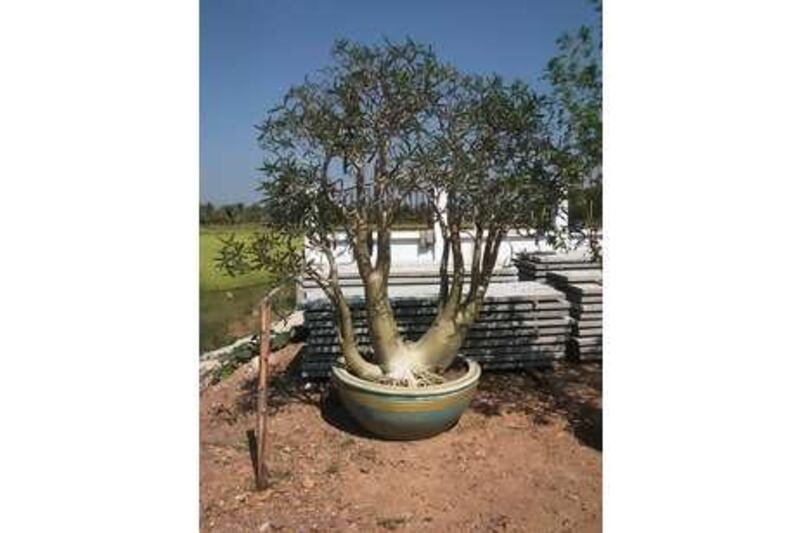Since I came to Abu Dhabi one of the things I've enjoyed most has been learning about a completely new palette of plants and the uses to which they can be put. This wasn't always the case and I remember how, in the early days and weeks after our arrival, my wife used to tease me by asking me the names of all the new plants that we saw from our car window. In the UK this would have produced an immediate and confident response but she knew quite well that I was having to start again from scratch and enjoyed seeing me struggle.
When thinking about plants I cannot help but form my own mental lists that group likely candidates according to various functional considerations but the decision about whether I use a plant in my own garden is ultimately determined by how guilty its use will make me feel. At one end of the scale are plants that score well in terms of their low water consumption and local origin while at the other are the thirstier, exotic specimens that I sometimes allow myself as a guilty pleasure.
When it comes to suggesting plants for readers, there is a final factor that I feel obliged to take into account: how available they are to private gardeners. With these caveats in mind, here are some of my suggestions for the coming season. At the dull but virtuous end of the scale are some very ordinary, readily available plants that usually perform well with minimal care. These are aloe vera, Sanseveria trifasciata (mother-in-law's tongue) and Adenium obesum (desert rose).
Although the aloe and Sanseveria are quite unremarkable as individual specimens, they really come into their own when in large pots or in drifts. I enjoy using the Sanseveria outdoors here because it is a houseplant in the UK and would never survive the elements all year round. It thrives when pot-bound, forming muscular spires of architectural foliage, which act as an excellent foil to plants with softer-shaped leaves. Aloe provides great texture as a groundcover plant with its subtle variations in colour between foliage and flower. Like the aloe, Adenium is a native of the Arabian Peninsula and is similarly drought tolerant. Single large specimen plants thrive in containers and, with their profuse and protracted displays of flowers, add much-needed colour and interesting structure to the low water-demand garden.
The next plants score well in terms of their water consumption but less so in terms of their origin and availability. I'm including them because they are unusual, deserve wider use and shouldn't be too difficult to order if you speak to your local nursery. Pachypodium lamerei, a succulent that's also referred to as the Madagascar palm, would easily win the prize for weirdest looking plant in most gardens. This slow-growing, thorn-clad oddity will reach 90-120cm in height. I would recommend growing them as either single specimen container plants away from inquisitive pets and children, or planted in small groups where their form and foliage can be seen to their best advantage.
If the Pachypodium seems far too odd and harsh-looking you may wish to consider the Gulf muhly grass, Muhlenbergia capillaris. A soft, ornamental grass with deep pinkish-red, feathery flower spikes, this has become a firm favourite with gardeners in the south-western states of the US, where it often features in xerophytic planting schemes and is grown in generous drifts. Desert broom (Baccharis sarothroides) is another American native, from the deserts of Southern California and Arizona. A tall, upright and slightly untidy plant, it nevertheless has an informal quality that would suit a larger garden with a more contemporary planting scheme. It can be found at Dubai Garden Centre.
My final selection is the most beautiful. I first saw the tropical Rangoon creeper growing on a pergola at the Shangri-La Hotel in Abu Dhabi. Struck by the beauty of its coral pink flowers and the way they hung in clusters, I immediately wanted to learn more about Quisqualis indica. It was only then that I discovered that its name could not be more appropriate, as the genus is Latin for "What is that?"
garden@thenational.ae Find these plants at www.desertgroup.ae/en or www.800plants.com





